Everything You May or May Not Want to Know about Lobster
Lobster is a favorite dish for many, especially during special occasions. But how much do you know about this delicacy? This post will dive into ten fascinating lobster facts that may surprise you. From their long lifespan to how they grow, lobsters are much more than just a tasty treat.
First, we’ll look at how lobsters communicate with each other.
Lobster isn’t just a fancy dinner—it’s a whole underwater soap opera wrapped in a hard shell. But how much do you actually know about this clawed crustacean? In this post, we’re diving claw-first into ten lobster facts that might just pinch your brain.
We’ll kick things off with how lobsters “talk” to each other (spoiler: it’s not exactly polite dinner conversation). Then we’ll check out their impressive party trick—growing back limbs. You’ll also discover their odd eating habits and survival skills that make them the tough guys of the deep sea. And yes, we’ll crack into how people catch them and what’s being done to keep lobsters around for the long haul.
Whether you’re a die-hard lobster fan or just here for the seafood gossip, these fun facts will give you a whole new appreciation for this salty superstar. Let’s crack that shell and dig in!
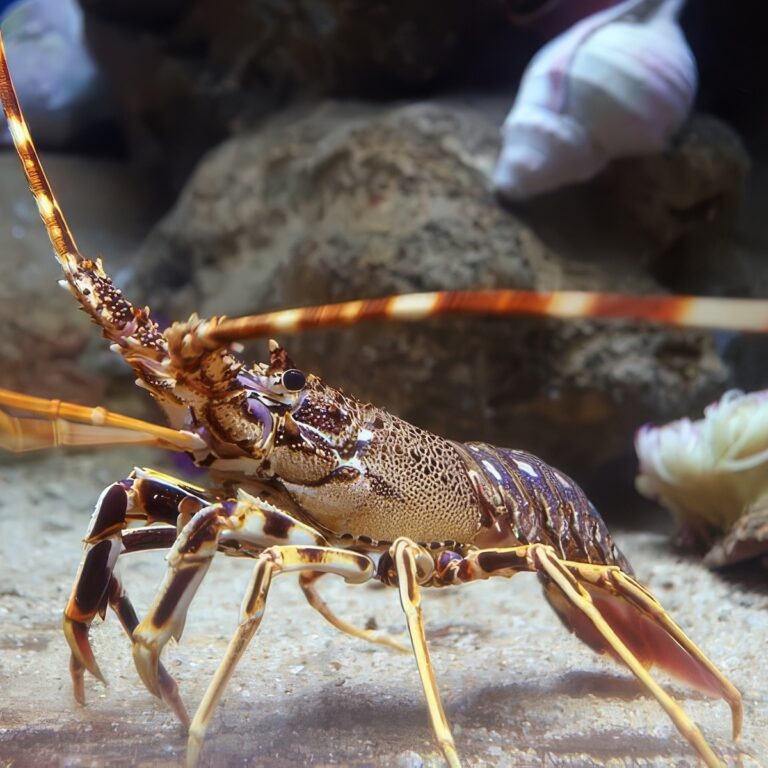
1. All Lobsters Are Not The Same
Not all lobsters roll off the same crustacean conveyor belt. Several species scuttle around out there, each rocking its own unique look and personality. The American lobster (Homarus americanus) steals most of the spotlight—big, beefy, and clad in a tough reddish-brown shell, it rules the North American Atlantic like the heavyweight champ of the sea. Meanwhile, its cousin across the pond, the European lobster (Homarus gammarus), keeps things a bit more refined with a sleek blue-gray shell and a slightly smaller frame.
When it comes to size, lobsters don’t mess around. Your average American lobster tips the scales at 1 to 2 pounds, but some super-lobsters bulk up to a jaw-dropping 40 pounds. Yes, they exist—and no, they probably don’t fit in your pot. Lobsters bulk up by molting, a glamorous process where they ditch their old exoskeleton and grow a new, roomier one. It’s basically their version of upgrading to a bigger apartment every so often.
Different lobster species also prefer different neighborhoods. American lobsters chill out in the deep, cold waters of the Atlantic coast, while European lobsters hang around the chilly Mediterranean and North Sea. Then there’s the spiny lobster (Panulirus), who clearly missed the memo on cold water and lives it up in the warm waters of the Caribbean and Pacific.
Now here’s a fun twist—not all lobsters are destined for the dinner plate. Spiny lobsters are sought after for their meaty tails, but others, like rock lobsters, don’t get as much love. Blame it on their smaller size or their more “acquired taste.” Either way, when it comes to lobsters, variety is the spice of the sea.
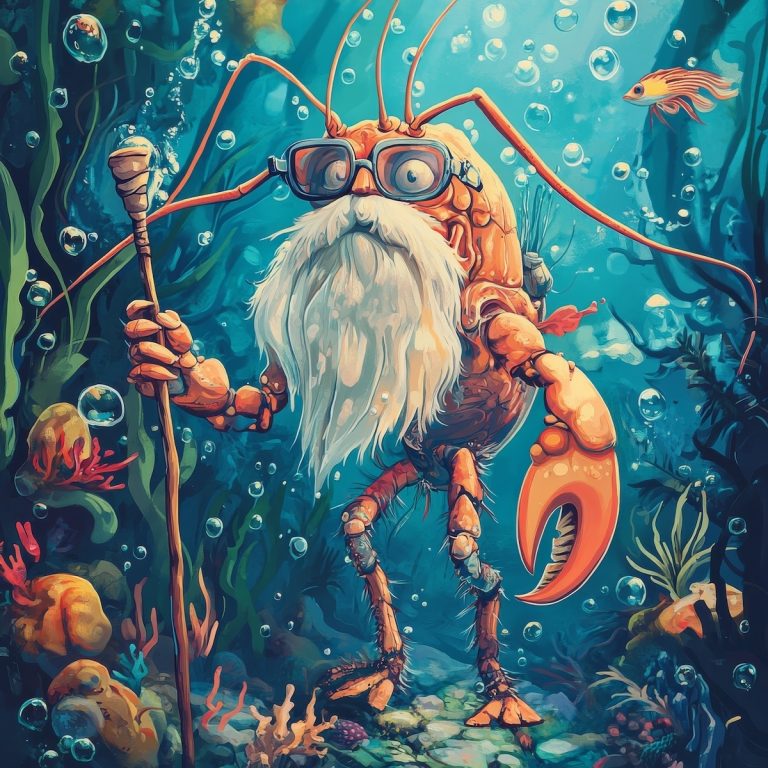
2. Smart Lobsters Can Live A Long Time
Lobsters are surprisingly intelligent creatures with impressive problem-solving abilities and complex behaviors. They have a well-developed nervous system and can learn from experience.
Studies have shown that lobsters can remember specific actions, like which route to take in a maze or which areas to avoid. They communicate with each other through gestures, such as waving their claws, and use these signals to establish dominance or find mates. This ability to learn and adapt helps them survive in the wild.
Lobsters are remarkable when it comes to longevity. They can live for decades, with some reaching up to 100 years old! Their long lifespan is partly due to their ability to regenerate lost limbs and maintain their health as they molt. Each time they shed their exoskeleton, they get a little bit bigger and sometimes healthier, making them less vulnerable to diseases that affect other animals.
Interestingly, lobsters don’t show typical signs of aging. As they grow older, their growth rate slows down, but they continue to molt and live. Scientists have even studied lobsters’ cells for clues to aging and how their bodies remain relatively free from age-related illnesses. Their ability to regenerate and keep living without much decline is part of what makes lobsters so fascinating.
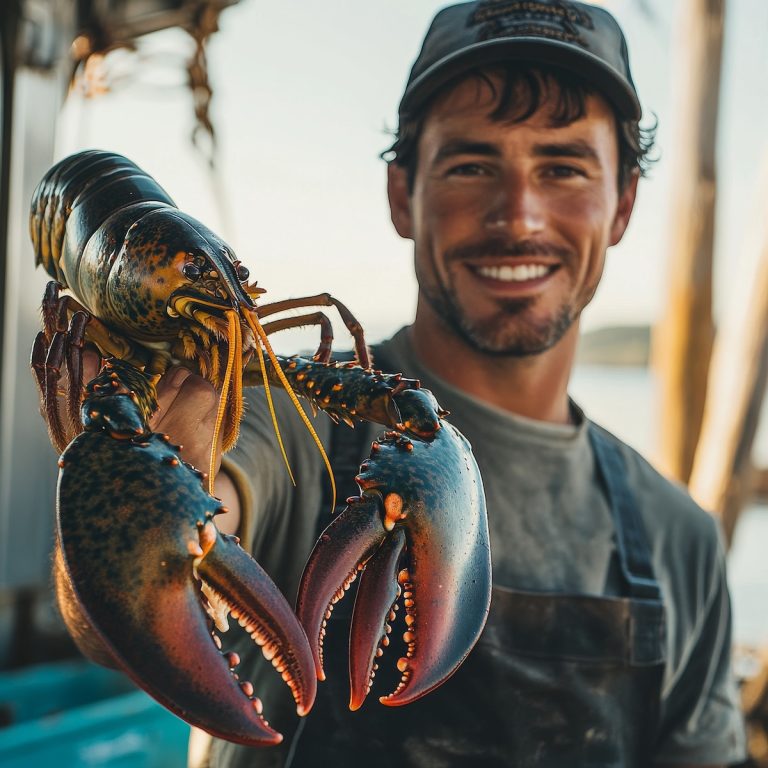
3. Old Lobster = Big Lobsters
Lobsters bulk up with every molt, but they don’t exactly rush the process. Young lobsters shed their shells like it’s a seasonal fashion trend—molting several times a year. But as they age, they slow things down. A mature lobster might wait years between wardrobe changes, turning molting into a rare, high-stakes event.
Each time they molt, they size up a little more. While the growth slows with age, lobsters don’t let that stop them. Thanks to their shockingly long lifespans, some of these ocean elders grow into real crustacean behemoths. It’s not unheard of for lobsters to hit over 20 pounds and stretch past 3 or 4 feet long—basically the bodybuilders of the briny deep.
The reigning king of lobster gains showed up in 1977, when fishermen off the coast of Nova Scotia hauled in a 44-pound, 6-ounce monster. This clawed colossus measured 3.5 feet long and was estimated to be about 100 years old—basically the Gandalf of lobsters. While you won’t see one that size at your local seafood boil, it proves that as long as lobsters keep molting and stay healthy, they just keep getting bigger. Forget aging gracefully—lobsters age gigantically.
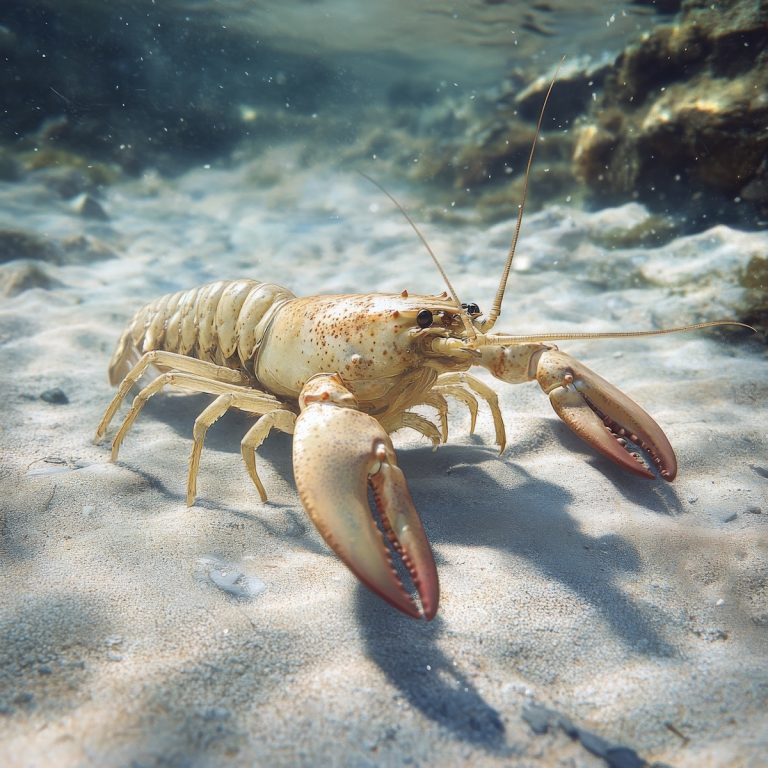
4. Hard Shell Versus Soft Shell Lobsters
Lobsters come in two main types based on the condition of their shells: hard-shell lobsters and soft-shell lobsters. These two types differ primarily in their age, size, and the timing of their molting process.
Hard-shell lobsters have a tough, fully developed exoskeleton that provides maximum protection. They are typically older lobsters that have gone through several molts and have reached a certain size.
Since their shell is thick and hardened, hard-shell lobsters are prized for their firm meat, which is often preferred for cooking due to its texture and flavor. These lobsters are more resilient to handling and shipping, which is why they are commonly available in markets.
Soft-shell lobsters, on the other hand, have recently molted and still have a soft, flexible exoskeleton. These lobsters are typically younger or have recently grown to a larger size. Because their shells are still soft, they are more vulnerable and harder to handle, which is why they are less common in stores.
However, soft-shell lobsters have a distinct advantage: their meat is more tender and easier to extract from the shell. Many lobster lovers enjoy the delicate texture of soft-shell lobsters, although they have a shorter shelf life compared to their hard-shell counterparts.
Both types offer a delicious lobster experience, but the choice often comes down to preference for texture and how the lobster will be prepared.
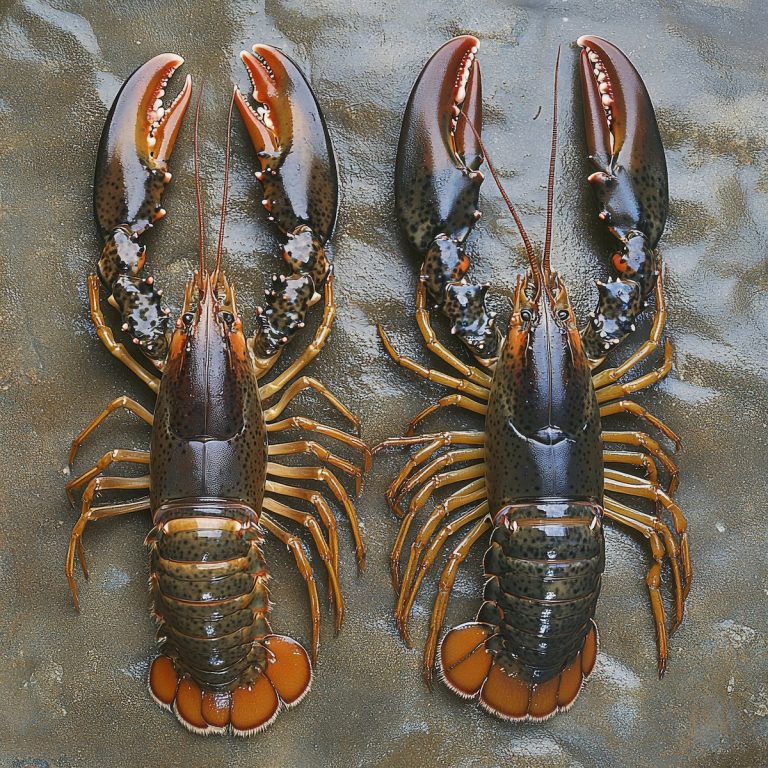
5. Boy And Girl Lobsters Look Different
Spotting the difference between male and female lobsters isn’t exactly a game of “Guess Who?”, but it does take a sharp eye—and maybe a little lobster anatomy knowledge. The easiest way to tell them apart? Check out the claws.
Male lobsters usually flaunt bigger, more lopsided claws. Their oversized “crusher” claw is the muscle of the duo, perfect for fighting and showing off in lobster turf wars. The smaller “picker” claw handles the delicate stuff, like feeding—basically the lobster version of a salad fork. Female lobsters, on the other hand, keep things more balanced, with claws that are closer in size and a little more refined.
Next, flip them over and take a peek at their tails (yes, really). Female lobsters sport broader, roomier tails—like nature’s baby carriers—designed to hold and protect their eggs. They also come equipped with pleopods, those tiny flaps under the tail that act like underwater incubators. Males don’t have these, because parenting isn’t really in their job description.
Color-wise, you won’t find much of a difference, but sometimes females show up in slightly lighter or duller shades, especially when they’re carrying eggs. Think of it as the lobster version of maternity wear—functional, not flashy.
Fishermen and researchers rely on these subtle clues to tell the boys from the girls. It’s not just trivia—it’s a key part of keeping lobster populations healthy and making sure future generations can keep cracking claws at dinner.
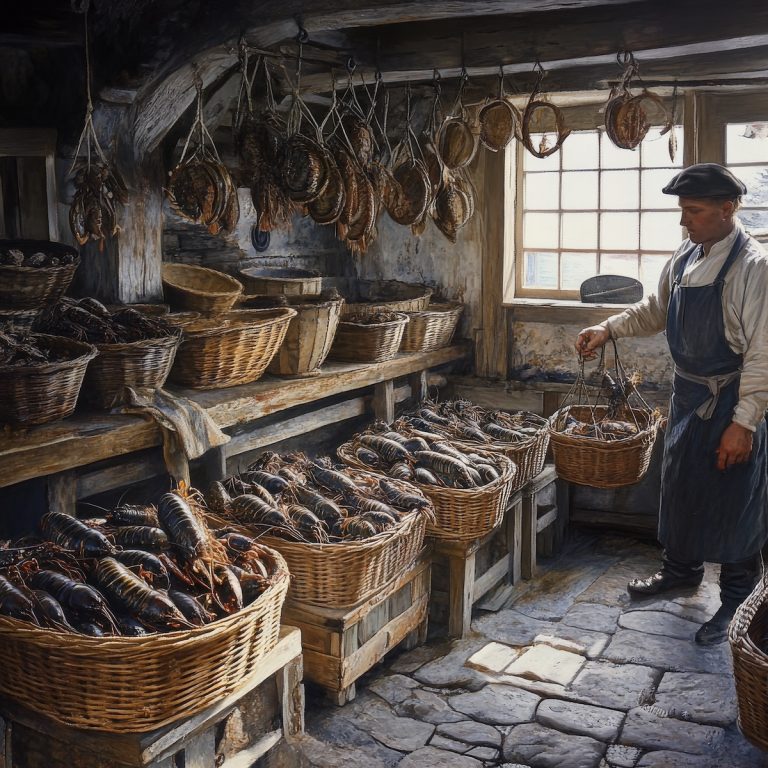
6. Let Them Eat “Lobster”
Back in the 1800s, lobsters had a serious PR problem. People didn’t see them as luxury seafood—they saw them as ocean bugs best suited for feeding prisoners and servants. In fact, folks often called lobster “poor man’s food” or “prison food,” and not in a cute, ironic way. Lobsters littered the New England coast in such ridiculous numbers that the wealthy turned up their powdered noses and wanted nothing to do with them.
Cooks shoveled lobsters into prison meals, tossed them to farmhands, and served them up to anyone who couldn’t afford “real” food. For the upper crust, eating lobster was about as glamorous as chewing on seaweed.
But lobsters got their glow-up in the late 19th and early 20th centuries. As railroads expanded and refrigeration became a thing, lobster suddenly became mobile—and that changed everything. Seafood sellers shipped fresh lobster inland to big cities, where curious diners—who had never seen the stuff crawling along their shores—started to fall in love with its sweet, tender meat. Demand exploded. What was once dirt-cheap prisoner chow quickly transformed into the toast of the urban elite.
By the mid-20th century, lobster had strutted into fine dining like it owned the place. Restaurants plated it up like edible gold, and suddenly everyone wanted a taste of what was once the food equivalent of a coal sandwich.
These days, lobster sits comfortably at the gourmet table, often reserved for anniversaries, fancy date nights, or “I got a bonus” celebrations. Not bad for a former crustacean castoff.
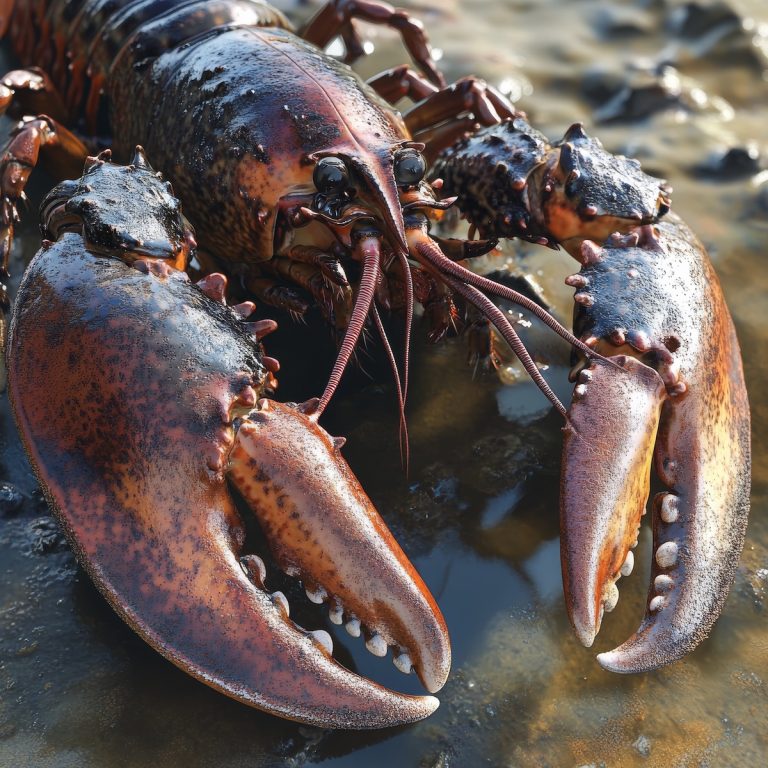
7. About Those Claws
Lobsters don’t just wave their claws around for show—they come equipped with two distinct tools of the trade, and each one packs a punch in its own way. These claws are famously mismatched, with one typically much larger than the other, and their size and shape can change depending on the lobster’s age and whether it’s rocking a beard or lipstick (metaphorically speaking).
The Crusher Claw:
This is the lobster’s heavyweight champ. Big, brawny, and built like a medieval mace, the crusher claw smashes its way through hard-shelled prey like mollusks and other crustaceans. Its broad, ridged surface turns crab legs and clam shells into seafood confetti. Lobsters also swing this claw around when it’s time to throw down with predators or rivals. In male lobsters, the crusher claw gets especially beefy, like it’s been hitting the gym while the other claw handles the snacks.
The Cutter (or Picker) Claw:
Smaller, sleeker, and sharper, the cutter claw takes care of the finer things. It tears up soft-bodied prey, picks apart dinner like a seafood sommelier, and even helps the lobster keep itself looking fresh with some underwater grooming. It’s the precision tool in the lobster’s toolkit—less about brute strength, more about finesse. In females, both claws tend to be more evenly matched, but the cutter still plays second fiddle in size.
Together, these claws give lobsters a full-service set of utensils—like having both a sledgehammer and a pair of tweezers at your disposal. Whether they’re cracking dinner, fending off enemies, or cleaning up, lobsters use their claws to get things done. It’s nature’s version of multitasking—with attitude.

8. Not the Smartest Creature In the Sea
Despite their complex behaviors and impressive abilities, lobsters have relatively small brains. Their brains are quite tiny compared to the size of their bodies. A lobster’s brain is about the size of a pea or even smaller, depending on the species. It is located in the head, just behind the eyes, and coordinates most of the lobster’s bodily functions, including movement, sensory processing, and some basic decision-making.
Lobsters’ nervous systems are highly decentralized, meaning that much of their bodily control is managed by a series of ganglia (nerve clusters) distributed along their bodies. This allows lobsters to perform complex actions without relying entirely on the brain. For example, their legs and claws can function somewhat independently, so lobsters can still move or defend themselves even if part of their nervous system is damaged.
Despite the size of their brains, lobsters are capable of learning and adapting to their environment. They can remember certain experiences and make decisions based on past encounters, such as recognizing dangers or finding food sources. Although their brains may be small, lobsters’ behaviors and survival skills demonstrate that even a small brain can have a big impact on the animal kingdom.
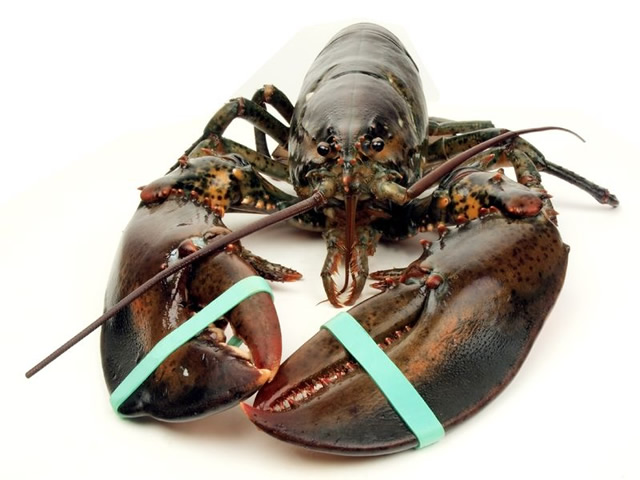
9. Banded Together
The rubber bands on lobster claws serve an essential purpose: they protect both the lobsters and the people handling them. Handlers place these bands on the lobster’s claws to prevent them from using their powerful pinchers, which could cause injury.
Lobsters have strong claws, and when they feel threatened or stressed, they may instinctively snap their claws in defense. The rubber bands contain this natural reflex, ensuring the lobster cannot harm itself or anyone handling it. This makes lobsters safer to handle, especially during transport or while displayed in markets and restaurants.
Handlers usually place the rubber bands on the lobster’s crusher claw (the larger of the two) and the cutter claw. While the bands do not completely restrict movement, they limit the lobster’s ability to pinch or grasp. The bright colors of the bands make them easy for handlers to spot and remove before cooking.
Once the lobster is prepared for cooking, handlers remove the rubber bands. This simple precaution protects both the lobster and anyone interacting with it, ensuring that the lobster’s claws do not pose a risk.
The rubber bands also prevent lobsters from injuring each other. Lobsters can be highly territorial, especially in confined spaces like transport crates or holding tanks. If left unchecked, lobsters may fight, using their claws to attack or compete for space and food.
By securing the lobsters’ claws with rubber bands, handlers prevent aggressive behavior and reduce the risk of injury in crowded conditions. This creates a safer environment for all the lobsters involved.
Once the lobsters reach their destination and are prepared for cooking, the bands are removed, allowing safe handling or cooking without the threat of clawing.
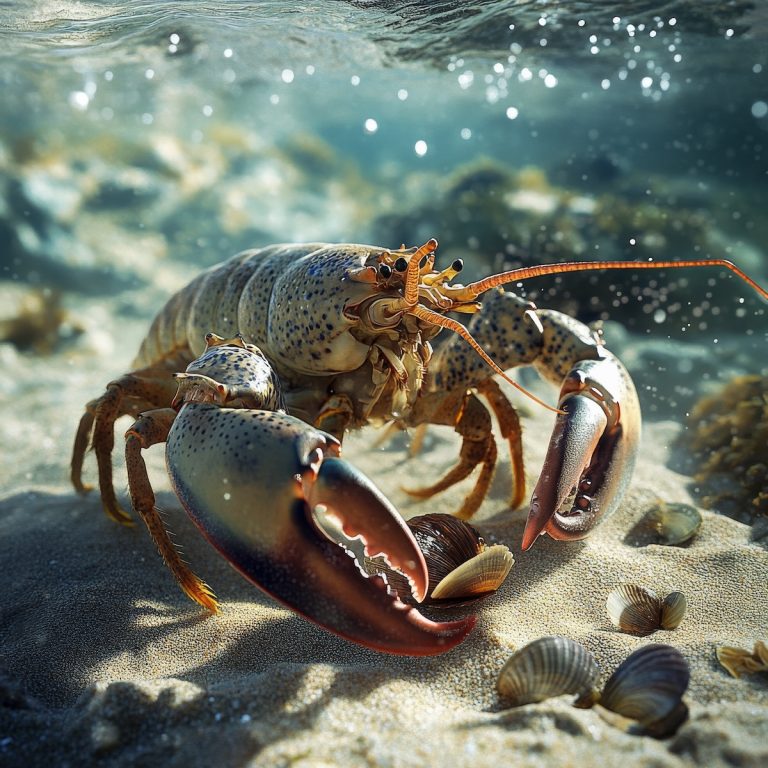
10. Lobster’s Diet
Lobsters are opportunistic feeders with a varied diet that reflects their role as scavengers in the ocean. They primarily eat:
Fish: Lobsters eat small fish when available. They often scavenge the remains of dead fish on the seafloor, using their strong claws to tear apart the carcasses.
Crustaceans: Lobsters also eat other crustaceans, such as smaller crabs, clams, and even other lobsters if they are weak or dead. They are cannibalistic, especially when food is scarce or when they are confined in crowded conditions.
Mollusks: Lobsters feed on mollusks like clams, oysters, and mussels. They use their crusher claw to break open the hard shells and access the soft meat inside.
Marine Worms: Lobsters consume marine worms they find while foraging on the ocean floor.
Algae and Plant Matter: While mostly carnivorous, lobsters occasionally eat plant matter like seaweed and algae, particularly when other food sources are limited.
Detritus: As scavengers, lobsters feed on detritus—decaying organic material—found on the seafloor. This helps them recycle nutrients and maintain the marine ecosystem.
Lobsters use their antennae and sensory hairs on their claws to detect food. Mostly nocturnal, they forage at night when they are less likely to be threatened by predators. Their diet supports growth, molting, and energy needs for survival in the wild.
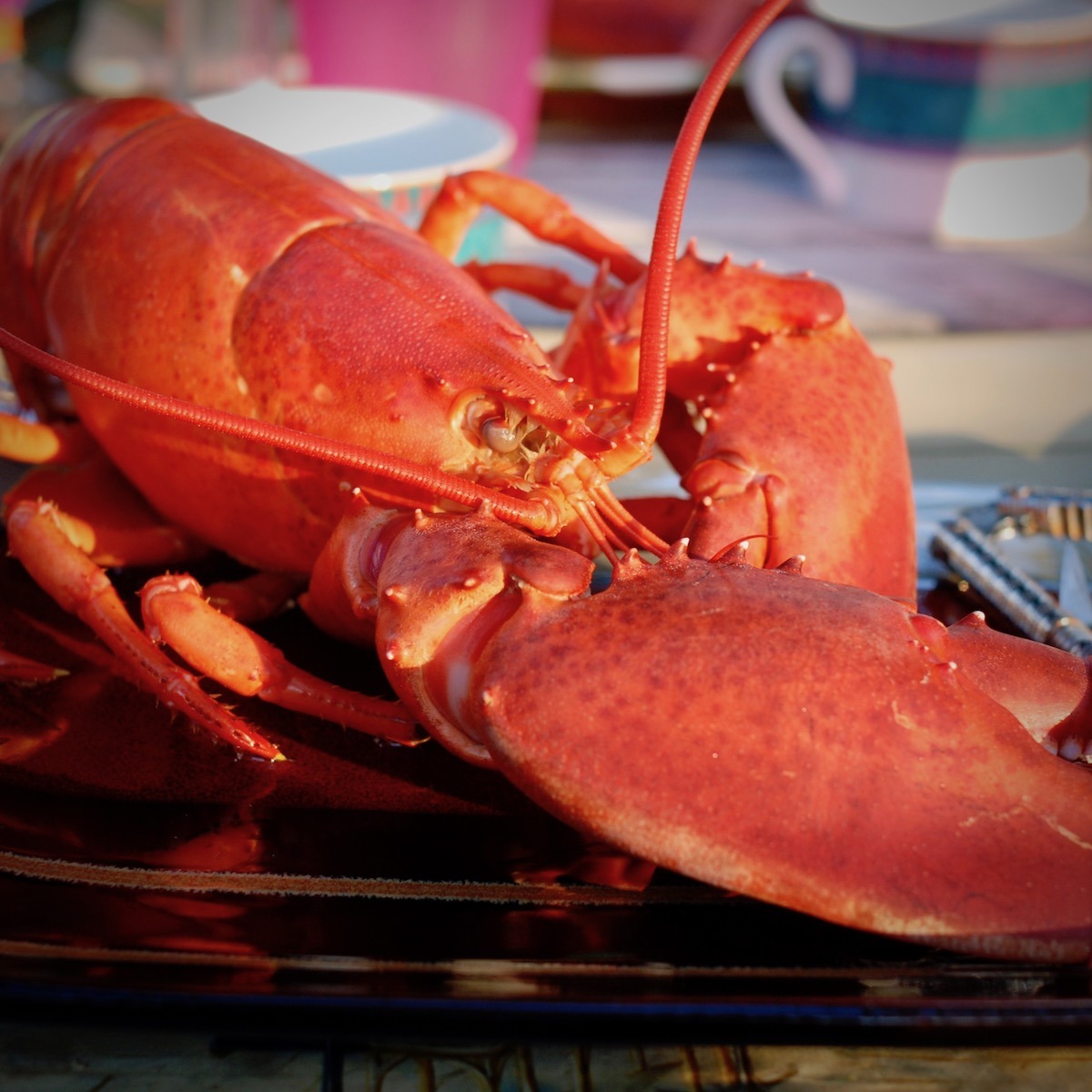

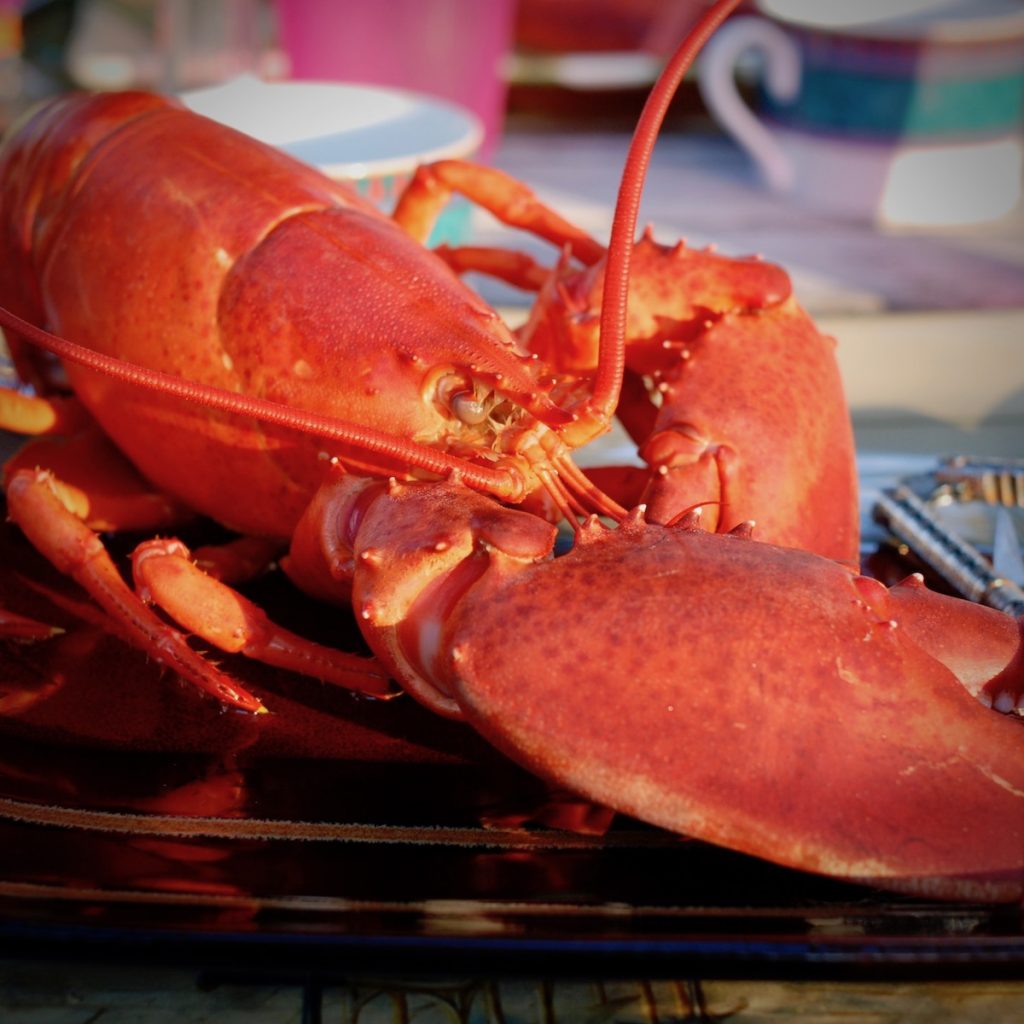




8 Responses
As stated in one of the lobster fun facts, they will eat almost anything they can get their claws on including other lobsters and even humans, if given the chances. So, don’t feel too guilty if you steam and eat a lobster every now and then.
That was a Ruth”less” thing to say.
I can’t believe my luck…lobsters too…
Having spent MANY a year dealing with seafood..here are my lobster facts..
1.You don’t have to turn a lobster upside down to tell if it’s male or female.Look at it from above.Look at the width of the tail.The female has a much wider tail than the male,it almost looks like she’s wearing a skirt !If you place a male and female next to each other,and compare,the difference will be quite evident.
2.You can hypnotize a lobster ! (It must have been a slow day at work).It’s a little difficult to explain,but bare with me…Pick up your lobster,hold both his (or her,see previous fact)claws in your left hand,and his body ,head pointing down,in your right,and gently lower him onto a solid,cold surface.Spread his claws a little,to the left and right,to form a ‘sort of’ tripod.Then gently stroke a finger down his carapace,towards the spike above his eyes a few times.
VOILA !! HE SLEEPS.He can be left like this for AGES.
Like I said,slow day at work.
3.Smoked lobster eggs have,in the past,been used as a poor mans caviar
4.The crushing power of a large (7 Kg plus) lobster has to be seen to be believed.It can put you in hospital.I’ve seen it happen.
5.The accepted,and humane way to kill a lobster,before putting it in the pot,is to drive a skewer through the mouth and into the brain.
That’s all,for now.Francois andre,ex-prof chef.bye-bye
“they don’t feel pain when immersed into hot water. I know there are some who disagree with this concept but I am not a scientist so I choose to believe it is true.”
How incredibly ignorant.. You don’t need to be a scientist to understand science. How about this, I’m not a scientist so I choose to believe humans don’t feel pain, so I’m going to pop you into a boiling pot of water ok?
James, scientists have not concluded either way whether lobsters feel pain when put into boiling water but they do know humans humans feel pain when boiled so your analogy is just silly and your comment rude. I am not a scientist but if I were, I would have to choose one position over the other and since I do boil my lobster, I choose to believe they don’t feel any pain. If you can definitively show me facts showing they do feel pain when cooked in boiling water, I will stop boiling them and find another way to prepare them for cooking.
According to Popular Science, lobster’s “brains aren’t much more complex than an insect’s. They only have a hundred thousand neurons, and no true centralized brain. They’ve got a set of ganglia (which is like a smaller, less organized brain made up of far fewer neurons) spread throughout their body. In terms of mental capacity, there’s a decent argument to be made that lobsters and crabs are just big bugs.”
That being said, the same article in Popular Science – https://www.popsci.com/swiss-lobster-pain – suggests “The answer seems to be: to chill. Not you—the lobster you’re hoping to eat. Putting cold-blooded animals like crustaceans (or insects) into a freezer or in icy water numbs them, and they don’t seem to have pain receptors that react to cold (they do live at the bottom of the ocean, after all). Of course, they’ll heat up as you put them in boiling water, but the transition seems to be fast enough that it shortens the time they flail about. Whether it actually changes what they feel is still uncertain, given how little we know about lobster pain in the first place. It may just help you feel better about it. But at least you’re giving your dinner a better chance at a gentle demise.”
And yet there are scientists who claim that lobsters actually feel pain worse than we do. We can choose to believe anything, I personally choose to use caution and not take the chance on causing them pain. Do No Harm! Apparently even plants can feel pain so….. human beings like to believe we are the most intelligent life on this planet and that has been proven incorrect, but the arrogance and self entitlement still exists and is even sadly growing.
Hi Marion, thank you for sharing your thoughts on the topic of lobsters. I’m very interested so please send me any studies you have found that say lobsters feel pain worse than we do. I would like to share it with my readers.
“I’m not a scientist, so I believe it is true”- well think again, and do some proper research. Cooking lobsters in hot water is infinitely cruel and barbaric. Scientists have proven a long time ago that they actually are very capable of feeling pain. If they are able to move away from ocean water areas that are just a few degrees to cold or too warm, imagine what they feel when being thrown in boiling water. The lack of a central nervous system does NOT imply the lack of capacity to feel pain. They also feel lonely, bored and depressed when they are awaiting their cruel deaths in tiny aquaria. They’re also starving, because restaurant owners refrain from giving them food, as that would require them to clean up their feces. Eating lobsters is IMMORAL.